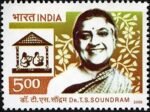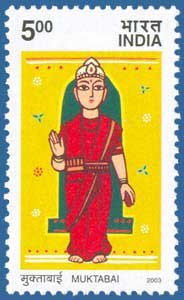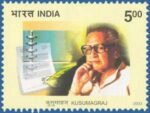Women
| Set / Name of Stamp | Date of Issue | Denomination | Image |
|---|---|---|---|
| Newborn Health in IndiaNovember 24, 2005 | November 24, 2005 | Rs. 5 |   |
| Dr. T. S. Soundram (1904-1984)October 2, 2005 | October 2, 2005 | Rs. 5 |   |
| Kittur Vijayotsava, Queen of KitturOctober 23, 2024 | October 23, 2024 | Rs. 5 |   |
| Ashok Chakra Winners : Neerja BhanotOctober 8, 2004 | October 8, 2004 | Rs. 5 |   |
| Folk Music – Allah Jilai Bai (1902-1992)December 28, 2003 | December 28, 2003 | Rs. 5 |   |
| MuktabaiMay 30, 2003 | May 30, 2003 | Rs. 5 |   |
| Kusumagraj (1912-1999)March 14, 2003 | March 14, 2003 | Rs. 5 |   |
| Kanika Bandopadhyay (1924-2000)October 12, 2002 | October 12, 2002 | Rs. 5 |   |
| Chandraprabha Saikiani (1901-1972)September 12, 2002 | September 12, 2002 | Rs. 5 |   |
| Vijaya Raje Scindia (1919-2001)December 20, 2001 | December 20, 2001 | Rs. 4 |   |
